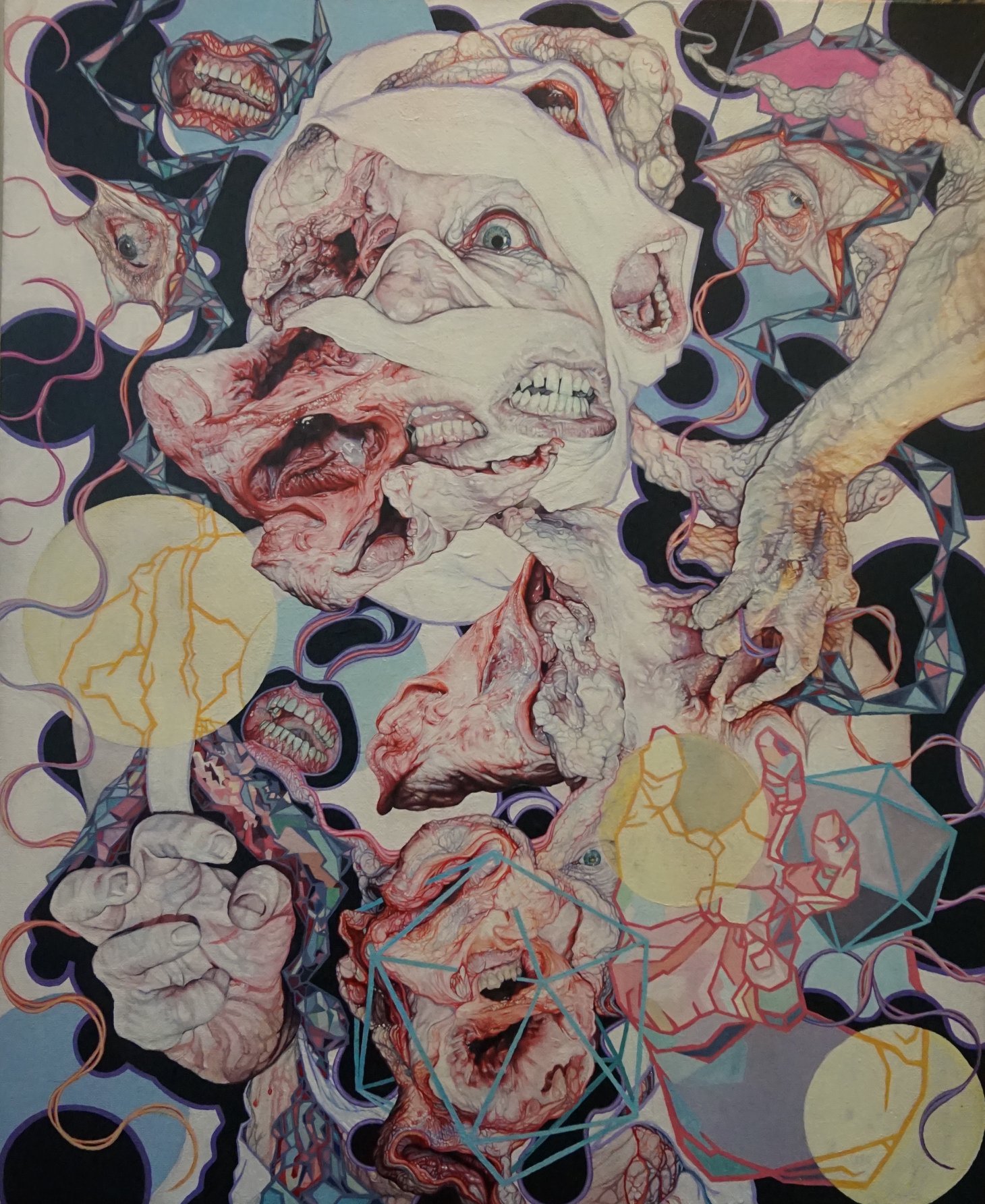
Frenchman Lou Ros is self-taught and he used to tag walls. You can see both in his work. He didn’t learn the academic tradition and then proceed to tear it down. He works from photographs; he wants to paint stills from films. Photographs and still shots capture moments in flux. That’s what Ros does. He paints until he finds the feeling he seeks or else discovers. Then he finishes. It doesn’t matter whether the work itself is academically done. What matters is that he’s done. He works rapidly, in short bursts of energy. That’s the tagger’s MO. In and out, say what you have to say, clear and simple, before the flics arrive.
His scenes are heavily staged. They always present some kind of drama, even if the drama is mundane. The work may appear sketched out but there’s nothing sketchy about its message. From those staccato brushstrokes and rivulets of paint, he builds up an experience of time. It’s as if he wants to capture the likeness before the moment fades.
His figures seem to come into or from some other time and place. Sometimes the pairing of people and places is startling. Other times we don’t have a clue what’s going on, as if these time travelers, a jockey and a nude woman, for instance, got their settings mixed up.
Despite compositions that look like the paint’s about to jump back into the tube, their details are spot-on, especially in the faces. He notes the shadows, sags, wrinkles, and the way flesh tone is not universally flesh toned. Stray wisps of hair, perfectly shadowed ears, razor sharp profiles, the texture of clothes — they’re all there, preserved, even if the moment of discovery isn’t.
He doesn’t finish them for a particular reason. He wants to speed up the process of becoming and dissolving. As soon as someone or something appears, is recognizable, acquires depth, breadth, and stature, it’s already on it’s way to moving on to something else. Just like him. Ros just points out the obvious. We are born, we live and we die. Not just over the course of a lifetime but minute-by-minute, second by second. It’s not macabre or sad. It’s just true. And that’s why he’s in a hurry to get on to the next one. He, too, is mortal.











 There’s both an absorbing and a grotesque quality to the paintings of
There’s both an absorbing and a grotesque quality to the paintings of  Chapel Hill artist
Chapel Hill artist 
 While most people's experiences with animals involve encountering the domesticated or captive sort,
While most people's experiences with animals involve encountering the domesticated or captive sort,